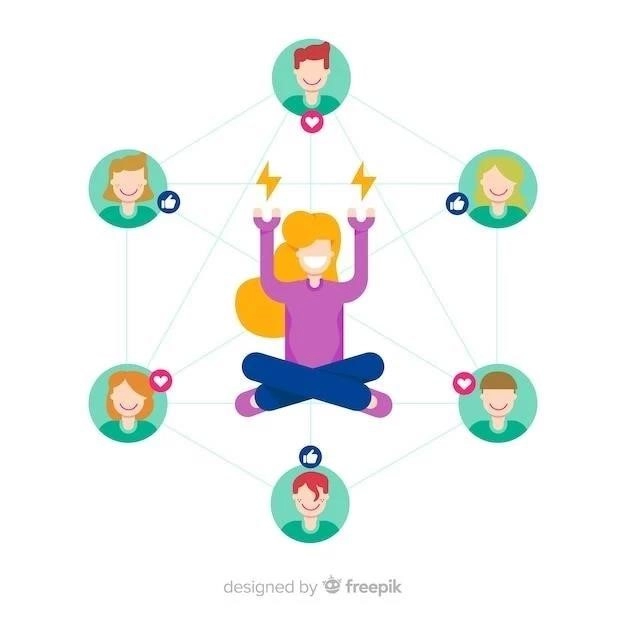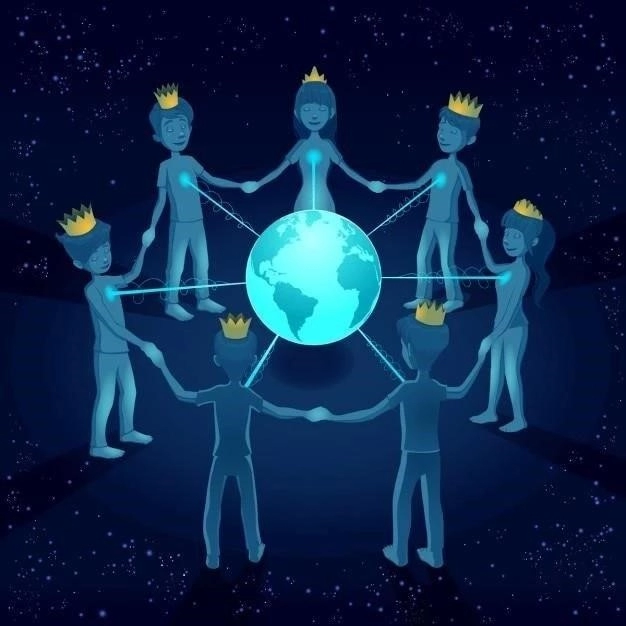I recently spent some time reflecting on the incredible complexity and interconnectedness of life on Earth․ Its truly awe-inspiring to consider the intricate web of relationships that exists between all living things, from the smallest microorganisms to the largest whales․

My Personal Encounter with Symbiosis
My fascination with this topic deepened when I observed a fascinating example of symbiosis in my own backyard․ I have a beautiful garden that attracts a variety of insects, including ants and aphids․ Now, I knew aphids could be harmful to plants, but I also noticed a colony of ants living amongst them․ Intrigued, I did some research․
It turns out, these ants and aphids have a mutually beneficial relationship․ The ants “farm” the aphids, protecting them from predators and even moving them to better feeding spots on the plants․ In return, the aphids secrete a sugary substance called honeydew, which the ants eagerly consume․ This delicate dance between species, where each benefits the other, vividly illustrated the concept of interconnectedness․

Beyond My Backyard⁚ A World of Interdependence
This experience led me down a rabbit hole of learning about other symbiotic relationships in nature․ I discovered⁚
- Clownfish and Sea Anemones⁚ The clownfish finds shelter within the stinging tentacles of the anemone, while the clownfish defends the anemone from predators and parasites․
- Bees and Flowers⁚ Bees rely on nectar and pollen from flowers for food, while in the process of collecting this food, they pollinate the flowers, enabling the plants to reproduce․
These examples, and countless others, demonstrate that the natural world is not simply a collection of individual organisms competing for resources; Instead, its a complex network of interdependence, where the survival of one species is often intertwined with the well-being of others․
The Importance of Understanding Interconnectedness
Recognizing the interconnectedness of all life is not just an abstract philosophical concept; it has real-world implications․ As humans, we are part of this web of life, and our actions have ripple effects throughout the ecosystem․
When we understand our connection to other species, we can make more informed choices about how we live our lives․ From the food we eat to the products we consume, our actions can impact the delicate balance of nature․ By learning to live in harmony with the natural world, we not only ensure the health of our planet but also our own well-being․
The interconnectedness of life is a beautiful and complex phenomenon․ By appreciating and understanding this interconnectedness, we can become better stewards of the planet and ensure a healthier future for all living things, including ourselves․
This newfound appreciation for interconnectedness completely changed how I viewed my own garden․ I used to reach for pesticides at the first sign of an aphid infestation․ But now, I saw those aphids not as pests, but as part of a complex system․ I did some research and discovered ways to attract beneficial insects like ladybugs, which naturally control aphid populations․ It was amazing! My garden became a little microcosm of balance, a testament to the power of working with nature instead of against it․
I even started composting! It felt amazing to take my kitchen scraps and yard waste and turn them into nutrient-rich soil․ I loved the feeling of closing the loop, of participating in the natural cycle of decomposition and renewal․ And my plants loved it too! They seemed to thrive on the compost, growing bigger and healthier than ever before․
This journey of discovery wasnt limited to my backyard․ I started paying closer attention to the interconnectedness of life everywhere I went․ On a hike with my friend, Sarah, we stumbled upon a fallen log covered in moss, fungi, and tiny insects․ Sarah was about to step over it, but I stopped her․ “Look closer,” I said, pointing out the intricate details of this miniature ecosystem․ We spent the next few minutes marveling at the diversity of life thriving in that single log, a stark reminder that even in death, there is life, interconnected and teeming with wonder․
That day with Sarah got me thinking about the interconnectedness of seemingly unconnected things․ I started to see connections everywhere, even in the most mundane aspects of my life․ Take, for instance, my morning cup of coffee․ I used to gulp it down without a second thought, but then I learned about the complex journey those coffee beans took to reach my mug․
I discovered that coffee farmers in places like Ethiopia and Guatemala depend on the health of pollinators like bees and birds for a successful harvest․ I read about the importance of shade-grown coffee, which preserves forest habitats for countless species․ I even learned about the role of fungi in breaking down coffee pulp, a natural form of composting that enriches the soil․
Suddenly, my morning coffee wasnt just a caffeine fix; it was a tangible link to a global web of life․ It made me realize that even small, everyday choices can have a ripple effect․ I started buying shade-grown, fair-trade coffee, knowing that my purchase, however small, was a vote for a more sustainable and interconnected world․
Inspired by my coffee revelation, I decided to take a hard look at other areas of my life․ My closet was the next target․ Id always been drawn to fast fashion – cheap, trendy clothes that I rarely wore more than a few times․ But learning about the environmental devastation caused by the fashion industry – the water pollution, the textile waste, the greenhouse gas emissions – made me realize that my shopping habits were contributing to a much larger problem․
I decided to try a clothing swap with a few friends․ We all brought clothes we no longer wore and spent an afternoon trying on each others things, laughing and sharing stories about our fashion mishaps․ I ended up with a cute vintage jacket and a pair of jeans that fit me perfectly, all without spending a dime․ More importantly, it felt good to give my old clothes a new life and to reduce my impact on the planet․
Embracing interconnectedness wasnt always easy․ There were times when I felt overwhelmed, like my individual actions couldnt possibly make a difference․ But then I would remind myself of that fallen log, a microcosm of life and death and renewal, and I would realize that every little bit helps․
One evening, I was having dinner with my neighbor, Michael, and I shared my newfound passion for interconnectedness․ Michael, a retired park ranger, listened intently, nodding his head in agreement․ “You know,” he said, “we humans often forget that were part of nature, not separate from it․”
He went on to tell me about his time working in the park, how he witnessed firsthand the delicate balance of the ecosystem․ He spoke about the importance of respecting all creatures, big and small, and how even seemingly insignificant actions can have unintended consequences․
His words resonated deeply with me․ I realized that interconnectedness wasnt just about making eco-friendly choices; it was about shifting my entire perspective․ It was about recognizing the inherent value of all living things and understanding that our actions have far-reaching consequences․
Michaels words stuck with me․ “Part of nature, not separate from it․” That phrase became a mantra, a reminder that my actions, no matter how small, had the power to either harm or heal․ I started to see the world through a new lens, noticing the interconnectedness not just in nature, but in every aspect of my life․
Take, for example, my job as a graphic designer․ I used to think of it as a purely creative pursuit, but then I started to consider the environmental impact of my work․ I learned about the deforestation caused by paper production, the toxic chemicals used in printing inks, and the energy required to power all those computers and printers․ It was eye-opening, to say the least․
I decided to make a change․ I started by talking to my boss about switching to recycled paper and soy-based inks, which are much more environmentally friendly․ To my surprise, she was totally on board! We even started offering our clients the option of printing on sustainable materials like bamboo and hemp․ It felt good to know that my work, which I was already passionate about, could also be a force for good in the world․
My newfound awareness of interconnectedness even extended to my relationships with other people․ I used to get easily frustrated with people who didnt share my values, but then I realized that were all interconnected, even in our differences․ Instead of judging or dismissing those with opposing viewpoints, I started trying to understand where they were coming from․ I engaged in respectful conversations, listened with an open mind, and discovered that even when we disagreed, there was always something to learn from each other․
One particularly memorable conversation was with my uncle, a staunch climate change skeptic․ I used to avoid talking about environmental issues with him, knowing it would just lead to an argument․ But this time, I decided to approach the conversation differently․ Instead of bombarding him with facts and figures, I simply asked him to share his perspective․
To my surprise, he opened up, sharing his concerns about the economy and the impact of environmental regulations on businesses․ I listened patiently, acknowledging his worries without judgment․ Then, I shared my own perspective, emphasizing the interconnectedness of environmental health and human well-being․ I explained how climate change wasnt just an abstract concept, but a real and present danger that threatened our planet and our future․
While we didnt completely agree, the conversation felt different․ There was a newfound respect and understanding between us․ We had connected on a human level, acknowledging our shared concerns for the future․ It was a small victory, but it gave me hope that even the most deeply held beliefs can shift when we approach each other with empathy and an open mind․










